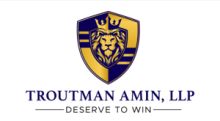The plague of reassigned numbers has been costing TCPA defendants for years now.
Way back in 2014 I was retained to advocate for industry on the issue–helping the the FCC to understand the problem and laying the groundwork for today’s Reassigned Number Database.
Companies that do not use the database, however, continue to suffer through TCPA suits seeking to hold them accountable–often in class actions–for calls made to unintended recipients.
And, of course, Mike Greenwald has made a killer living bringing these “gotcha” wrong number class cases:
Mike Greenwald explaining how he wins these wrong number suits. For more INCREDIBLE content be sure to follow our You Tube Channel!
But Greenwald is not alone bringing these suits. Even a guy like number 7–Avi Kaufman–dabbles in wrong number class action suits and today’s news is a Kaufman special.
In Hylton v. Titlemax of Virginia, Inc., CIVIL ACTION NO.: 4:21-cv-163, 2022 U.S. Dist. LEXIS 202470 (S.D. Ga. November 7, 2022) the court to recognize any safe harbor in the context of calls to reassigned numbers–at least where the defendant could not demonstrate usage of the reassigned number database (RND.)
The background here is of the typically-dense TCPAWorld variety.
The TCPA provides callers with a defense where the “Called party” provides consent. While it seems logical that the “called party” is the person the caller was trying to reach–you don’t “call” a wrong number recipient you “call” your friend, you dial a wrong number, but I digress–the Courts and the FCC have stubbornly defied logic for a decade now and concluded that only the “subscriber” and maybe the “customary user” of a phone is the “called party” that can give consent.
Such a rule is a disaster, of course, for callers who can never really be sure whether or not the consumer gave a correct number or whether a number has changed hands.
Enter the reassigned number database–using the database a caller can quickly determine whether a number has changed hands before making a call. Unfortunately it is quite expensive so that’s an issue. (But not, perhaps, as expensive as a class action lawsuit.)
Of note–the head of the RND has agreed to appear on our next edition of Deserve to Win –Episode 8. So the “hopper” now includes Episode 6 (with Josh Swigart) Episode 7 (with LawHQ) and Episode 8 (with the RND folks). How awesome are we?
Moving forward, there is GOOD reason to assert that a good faith defense exists with respect to calls to wrong numbers, even if you’re not using the RND. That’s because the FCC says there is.
Specifically, in 2015 the FCC recognized that imposing strict liability on callers attempting to reach consumers on numbers that had changed hands is simply unfair–that’s my handiwork BTW (and you’re welcome.) But it yielded to the NCLC and the consumer lawyers by holding that a caller can only rely on a previous subscriber’s consent for one call.
That was a garbage safeharbor–one call is not sufficient in most cases to put a caller on notice that the number has changed hands–and the D.C. Circuit Court of Appeals struck down the safeharbor as insufficient in a case called ACA, Int’l. That is, the safeharbor was not safeharbory enough.
In a perversity of logic that one, again, finds only in TCPAWorld, however, courts addressing the issue post-ACA In’tl have found that since the Appeals Court struck down the FCC’s one call safeharbor now there IS NOT safeharbor at all. Which is, not even close to correct. But that’s what the majority of courts have done anyway.
Which brings me back to Hylton.
In Hylton the court considered all of this background but concluded–incorrectly but firmly–that no safeharbor exists.
First, the court confirmed that the NEW subscriber to the phone is the “called party” for consent purposes even though the caller was trying to reach its customer–the person that gave the phone number and then disappeared and changed numbers. The old ghosty ghost.
Second, the Court found that the text of the TCPA simply does not allow for any good faith defense. The TCPA requires consent of the “called party” and that’s Plaintiff, not ghosty customer. There’s simply no permission slips granted for numbers changing hands (which is true, and also PRECISELY why the “called party” definition needs to be reinterpreted to apply to the intended recipient of the call.)
Third, the Court concluded that ACA Int’l did not actually agree with the FCC’s “you can rely on the consent of a former subscriber” concept. And here is where this court–and others get it wrong. The D.C. Circuit Court of Appeals did, in fact, bless and keep the FCC’s finding that a caller can reasonable rely on a former subscriber’s consent. That was the reason the one-call safeharbor had to go–because it did not suffice in light of that ruling.
Rather than recognize what the D.C. Circuit actually did, the Hylton court concluded that ACA Int’l merely cast aside all of the FCC’s handiwork on the matter. But that is simply untrue. Of course, Defendant’s briefing apparently cost them on this point: “Titlemax concedes that ACA International “left open the question of whether a caller could reasonably rely on express consent provided by a previous subscriber, or, alternatively, whether a strict liability standard should apply.”
ACA left open the door? No, the FCC left open the door. ACA In’tl swung it wide open. The Circuit Court of Appeals didn’t leave open the question of anything. It confirmed a party can reasonably rely on the consent of a former subscriber as the FCC expressly fond. Not sure why a Defendant would suggest otherwise in briefing.
But what do I know?
Anyhoo, the Court concluded its analysis with a discussion of the RND. And here is where TCPAWorld REALLY needs to pay attention. In essence the court held that the fact that the RND exists means that any caller who is not using it may be liable for wrong number calls to reassigned numbers and has no basis to cry about it:
In providing a safe harbor solely for callers who, in essence, were misled by the RND into calling the reassigned number, the FCC implicitly determined that callers who called without using the RND (like Titlemax) cannot escape liability merely because their intended recipient had consented to receiving calls prior to the reassignment.
The ole “implicit determination.”
Either way–the key here is that callers who are not using the RND are going to receive no refuge from the courts where wrong numbers are concerned. And even given Titlemax shooting itself in the foot some in the briefing, I don’t think it was outcome determinative. This court was going to come out this way regardless.
The take away here is clear: if you are making large volumes of calls you MUST be considering the use of the RND unless you are ONLY calling numbers you just received within 30 days or so. (In those instances you should consider vendors that can help you detect WRONG numbers as opposed to REASSIGNED numbers.)
Plaintiff’s Lawyer Adrian Bacon Discussing the RND on Deserve to Win.
Always happy to talk this through and be on the lookout for Deserve to Win Ep. 8 with the RND folks.




 />i
/>i

